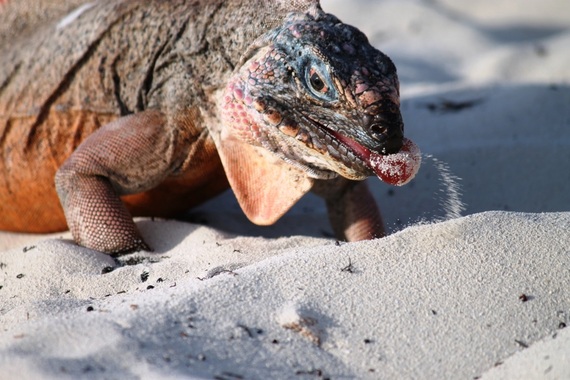Although feeding wildlife has become an increasingly common tourist activity, I suspect that many of you have visited a national park or zoo and read signs asking you to do the opposite -- Do Not Feed the Animals. This might leave one asking, "So, which is it?"
Feeding wildlife, especially with unnatural and inappropriate food items, could potentially lead to obesity or nutritional disorders. Exposure to constant feeding may also alter foraging behavior and prompt animals to ingest objects that could be harmful. Fed animals also tend to congregate in close proximity to each other, which can increase aggression, spread disease, and cause other problems. These consequences are serious and unacceptable.
However, feeding wildlife can also have beneficial effects on animals such as increasing nutrient intake during periods of low-food availability, augmenting fat stores, and increasing the number of eggs laid or babies born. Nature-based tourism also offers an alternative to more consumptive uses of the environment, and the close interactions between people and wildlife driven by the offer of feeding experiences can promote health benefits in humans and positive attitudes toward conservation.
Thus, the issue of tourism and wildlife feeding is complex, especially in countries heavily dependent on tourism revenues since the short-term socioeconomic benefits are immediate whereas the potential long-term negative ecological consequences are uncertain.

Our concern about the potential effects of increased visitors and feeding prompted us to investigate the stress and nutritional responses of these iguanas.
The results? Nutritional parameters of already-imperilled iguanas are being affected by tourist-fed foods.
The study was unusual in that we did not document any differences in animal stress between iguana populations that were visited and fed versus non-visited populations. This is likely because iguanas view people as sources of food. We did, however, document nutritional differences between populations. In short, iguanas from fed populations had higher glucose levels, most likely due to a constant diet of grapes. Grapes may seem like a natural food but like in humans, too much sugar is unhealthy. Male iguanas from visited populations also had higher cholesterol and triglyceride levels. As in humans, diet can affect triglyceride levels in reptiles, especially with foods containing excessive sugar and starch. Since these iguanas can live almost as long as a human, these and other chronic nutritional differences indicate that the long-term health and survival of tourist iguanas have a significant probability of being affected.
Some may agree that the endangered status of these iguanas should supersede recreational tourism. We do not, however, endorse eliminating tourist visitation at this time. Indeed, we recognize the economic and potential educational benefits of this type of activity. Tourism is the economic driving force of the Bahamas, so we need to develop realistic solutions for the industry. Full details of our findings, including recommendations that could help both iguanas and the tourism industry, were published online this week by the journal Conservation Physiology and may be found here.
What can you do to help?
If you participate in wildlife tourism, ask questions about the animals that you are observing. If there is a feeding element, ask if the operators are taking proper precautions to ensure minimal impact on wildlife. Ask if there is a way to donate or participate in advancing the conservation of the species that you are visiting. The main driver for change in the industry is demand from the consumers. You have power. Help wildlife and use it.
About the Study
'Physiological effects of tourism and associated food provisioning in an endangered iguana' by Charles R. Knapp, Kirsten N. Hines, Trevor T. Zachariah, Caro Perez-Heydrich, John B. Iverson, Sandra D. Buckner, Shelley C. Hallach, Christine R. Lattin, and Michael Romero. Conservation Physiology, doi: 10.1093/conphys/cot032
About the Author
Dr Charles Knapp is Vice President of Conservation and Research at the John G. Shedd Aquarium in Chicago, and leads their global field-based conservation and on-site research programs. He is also the co-chair of the International Union for Conservation of Nature (IUCN) Species Survival Commission Iguana Specialist Group. Shedd Aquarium has been studying and implementing conservation strategies for the iguana since 1994 and is now recognized as the leading authority on the species.
